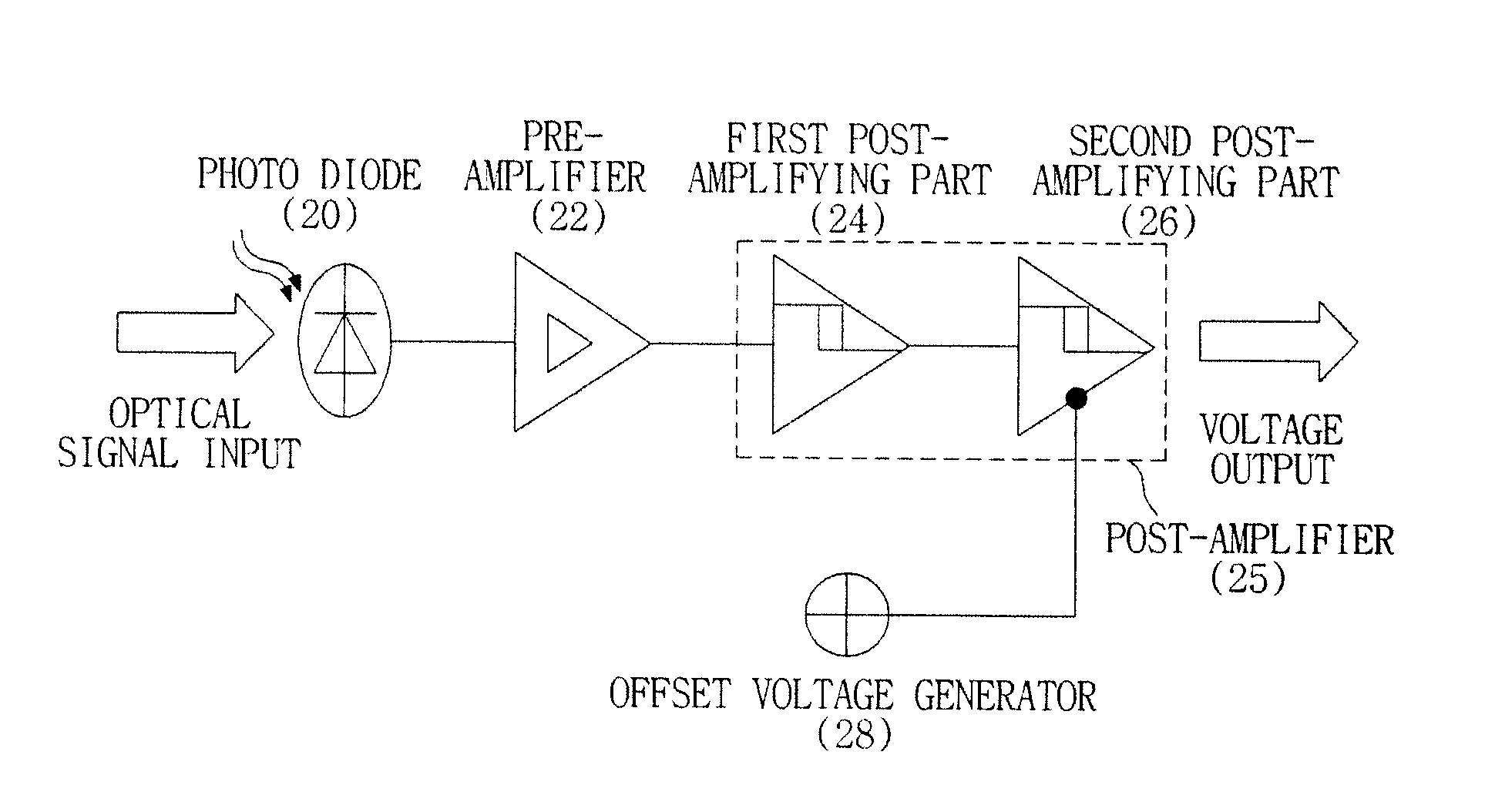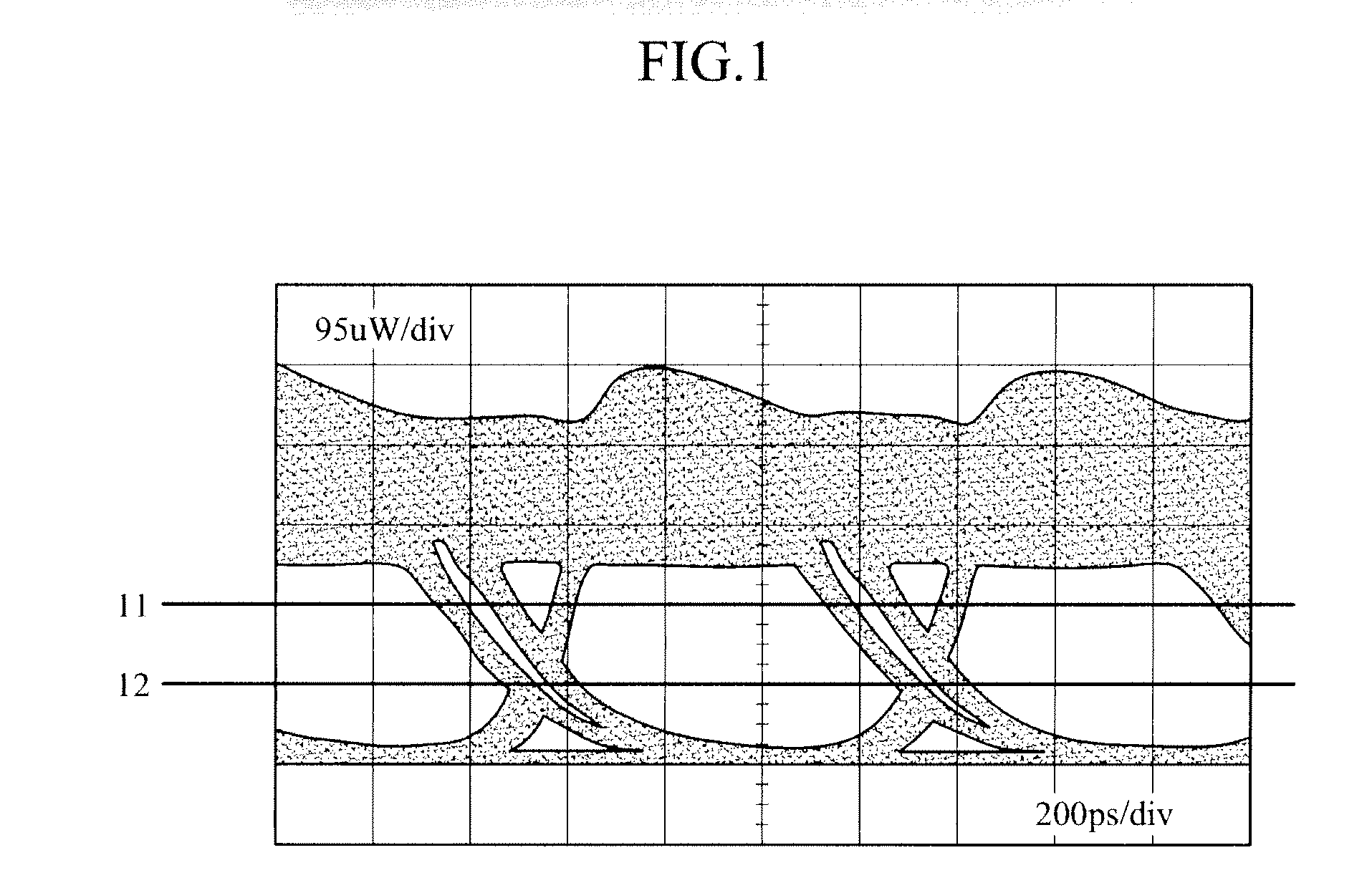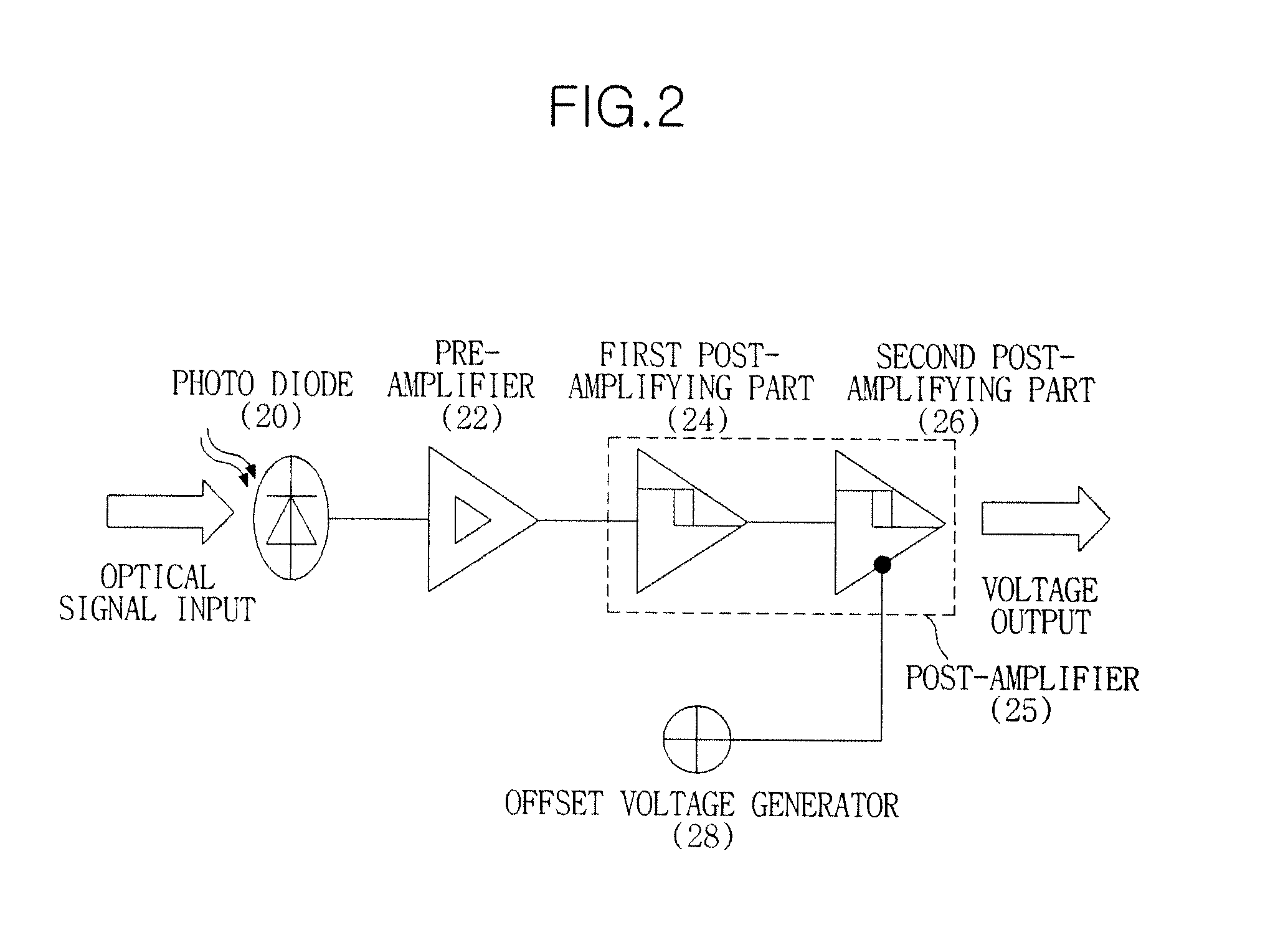Optical receiver, optical line terminal and method of recovering received signals
a receiver and optical line technology, applied in the field of optical receivers, can solve the problems of predetermined transmission penalty, optical power penalty due to a bit intensity noise created, optical power penalty,
- Summary
- Abstract
- Description
- Claims
- Application Information
AI Technical Summary
Benefits of technology
Problems solved by technology
Method used
Image
Examples
Embodiment Construction
[0027]The detailed description is provided to assist the reader in gaining a comprehensive understanding of the methods, apparatuses and / or systems described herein. Accordingly, various changes, modifications, and equivalents of the systems, apparatuses, and / or methods described herein will be suggested to those of ordinary skill in the art. Also, descriptions of well-known functions and constructions are omitted to increase clarity and conciseness.
[0028]FIG. 1 is a diagram illustrating a received signal in a typical optical receiver. As shown in FIG. 1, noise components caused by conventional problems are mainly located at level “1” of an optical signal. It can be seen from an eye diagram of FIG. 1 that a re-modulated downstream optical signal causes a thickness of level “1” to become thicker than a thickness of level “0”. That is, an extinction ratio of the downstream optical signal appears to be greatly reduced due to a gain compression, which is one of characteristics of a refl...
PUM
 Login to View More
Login to View More Abstract
Description
Claims
Application Information
 Login to View More
Login to View More - R&D
- Intellectual Property
- Life Sciences
- Materials
- Tech Scout
- Unparalleled Data Quality
- Higher Quality Content
- 60% Fewer Hallucinations
Browse by: Latest US Patents, China's latest patents, Technical Efficacy Thesaurus, Application Domain, Technology Topic, Popular Technical Reports.
© 2025 PatSnap. All rights reserved.Legal|Privacy policy|Modern Slavery Act Transparency Statement|Sitemap|About US| Contact US: help@patsnap.com



